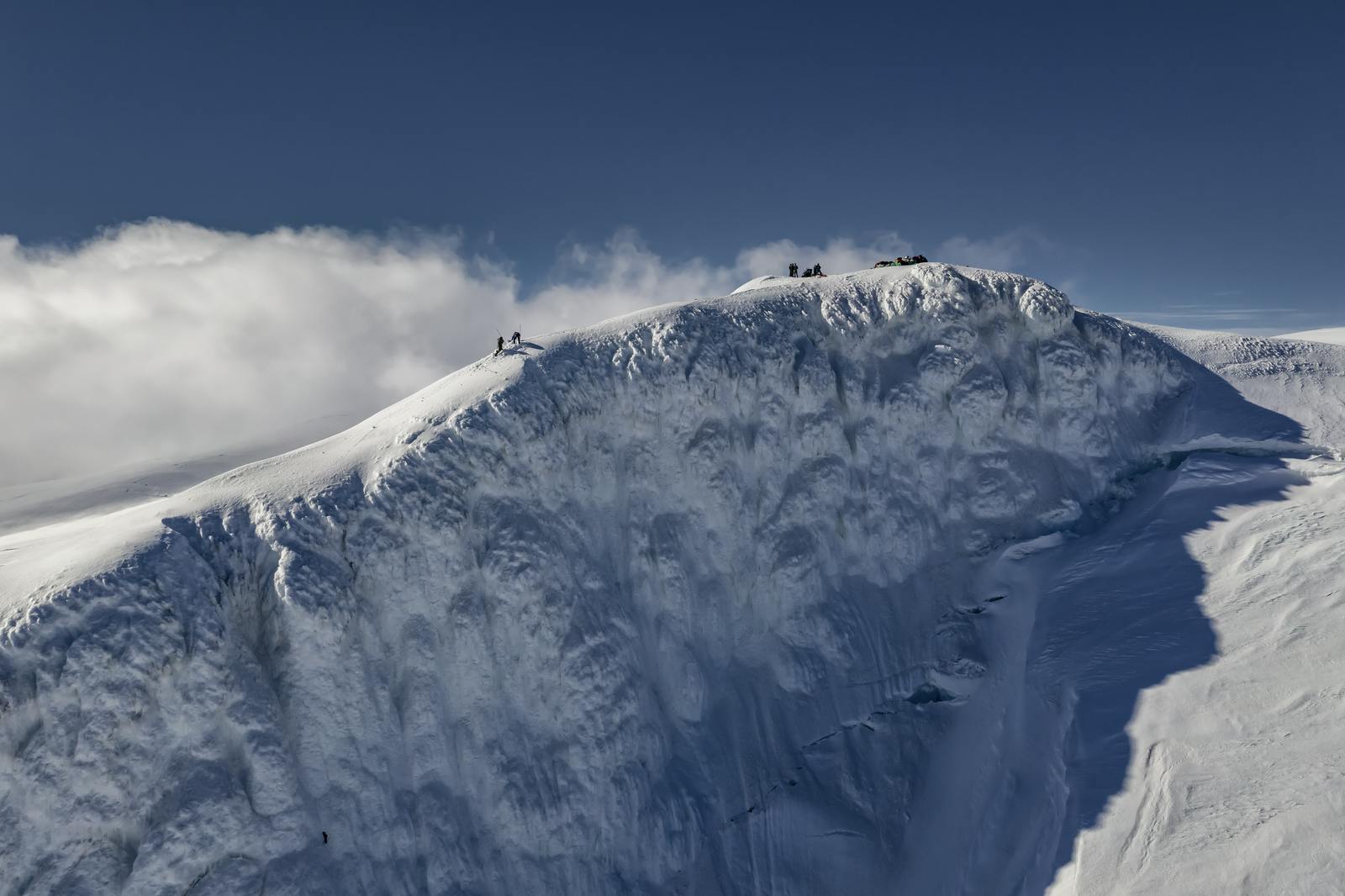
Vatnajökull Glacier
Glaciers are essential to the global ecosystem as they store a significant portion of the world’s freshwater in the form of ice. The vast icy expanses help regulate the Earth’s climate by reflecting sunlight, and they hold vast amounts of water, so their melting contributes to the rise in sea levels. As a result, they play a significant role in regulating sea levels.
How Big is Vatnajökull?
Vatnajökull is one of Iceland’s most visited natural wonders and Europe’s largest glacier by volume, covering about 7% of the island. Located in the southeast region of Iceland, it spans an area of around 7,700 square kilometres (2021). The breathtaking glacier encompasses various landscapes, from majestic ice caps to volcanic peaks and stunning glacial rivers.
How Was Vatnajökull Formed?

Vatnajökull glacier has been shaped by geological events over thousands of years. Its formation began during successive ice ages, particularly the last glacial period, which started around 110,000 years ago and ended roughly 12,000 years ago. During these ice ages, snow accumulated in Iceland’s interior central highlands, gradually compacting into ice and forming a massive ice cap. Over time, this snow and ice accumulation grew thicker and stretched outwards, creating a vast glacier covering the whole island and its insular shelf.
The accumulating ice’s weight and pressure caused it to flow and spread, carving out valleys and fjords, shaping the landscape beneath it. As the ice moved, it smoothed and sculpted the underlying terrain, creating distinct features like U-shaped valleys and glacially carved landforms. Some 20,000 years ago the Ice sheet started to melt down. It retreated inland and 10,000 years ago it only covered the highest mountains here and there in the Central Highlands. Since then Vatnajökull has been the largest one in Iceland.
What is Under Vatnajökull?

Underneath the mighty Vatnajökull glacier are active volcanoes, subglacial lakes and ice caves. Although potentially dangerous during eruptions, these volcanoes also contribute to the glacier’s unique features, creating natural ice caves, crevices and unique formations within the ice.
Vatnajökull covers several active central volcanoes, including Grímsvötn, Bárðarbunga, and Öræfajökull. Eruptions under the ice can lead to jökulhlaups, which are glacial outburst floods.
There are various subglacial lakes formed by geothermal heat and melting ice. The most famous is Grímsvötn, known for its high geothermal activity.
What Kind of Glacier is Vatnajökull?

Vatnajökull is classified as an ice-cap glacier, an ice mass covering entire landscapes and often characterised by its relatively flat surfaces. Icecap glaciers, like Vatnajökull, form in polar or high-altitude regions where snow accumulation exceeds melting, leading to the gradual buildup of ice over time. These glaciers are dynamic systems, constantly in motion as ice flows outward under its own weight.
Furthermore, Vatnajökull has numerous outlet glaciers that stretch from its centre, flowing down valleys and carving the surrounding landscape. These outlet glaciers are responsible for some of the breathtaking features of the area, such as glacier tongues, ice caves, and stunning ice formations, including the Jökulsárlón Glacier Lagoon.
What Activities Can You Do at Vatnajökull?

Vatnajökull is not just a natural wonder but a dynamic ecosystem, home to various species of birds and wildlife that thrive in this harsh but beautiful environment. Protecting this glacier and its surroundings is of utmost importance as it plays a crucial role in Iceland’s landscape and ecological balance.
Does Vatnajökull Have Natural Ice Caves?

Vatnajökull harbours some of Iceland’s most spectacular ice caves. These ice caves form as a result of the glacier’s movement and the melting and refreezing of ice. They can vary in size, shape, and accessibility from year to year. New caves form every year.
The ice caves within Vatnajökull are renowned for their stunning blue hues, caused by the compression of ice over hundreds of years, which absorbs most colours of the spectrum except blue. This phenomenon creates an otherworldly and mesmerising atmosphere inside the caves.
Each ice cave within Vatnajökull offers a unique experience, with intricate ice formations, tunnels, and breathtaking blue ice walls that captivate the imagination. However, it’s important to note that due to the dynamic nature of glaciers, the accessibility and conditions of these ice caves can change significantly from one year to the next.
Where Can I Learn About Glaciers in Reykjavík?

Perlan’s Wonders of Iceland exhibition features an ice cave that is 100 metres long and made from more than 350 tonnes of snow from Icelandic mountains. Ice caves are a natural phenomenon that takes shape in the deep winter months within glaciers. Meltwater streams carve these fantastic caves, and at Perlan, guests can see a real ice cave in a safe and secure environment. A visit to an ice cave is a magical experience that no one who comes to Iceland should miss, and Perlan offers year-round travellers a chance to get a sense of this unique natural phenomenon.
In addition to their natural beauty, glaciers in Iceland are significant for the environment as they are an essential source of fresh water for the island and play a vital role in regulating its climate.
At Perlan, guests can explore Iceland’s’ natural wonders through a series of exhibits and immersive presentations, including ice caves and glaciers, as well as northern lights and volcanoes.
FAQ

How to pronounce vatnajökull?
Vatnajökull is pronounced as "VAT-nah-yer-kutl".
Is it safe to visit glaciers in Iceland?
Glaciers are perfectly safe from a distance, but travellers should never attempt to walk on a glacier without a trained glacier guide. Some snow-covered cracks and crevices can pose great danger to those unfamiliar with the surroundings. Guided tours are advisable to experience a glacier in Iceland fully.
What's under Vatnajökull Glacier?
Active volcanoes (like Grímsvötn, Bárðarbunga), subglacial lakes, geothermal activity, ice caves and tunnels, mountain ranges, and valleys and canyons.
What type of glacier is Vatnajökull
Vatnajökull is a temperate ice cap glacier.







